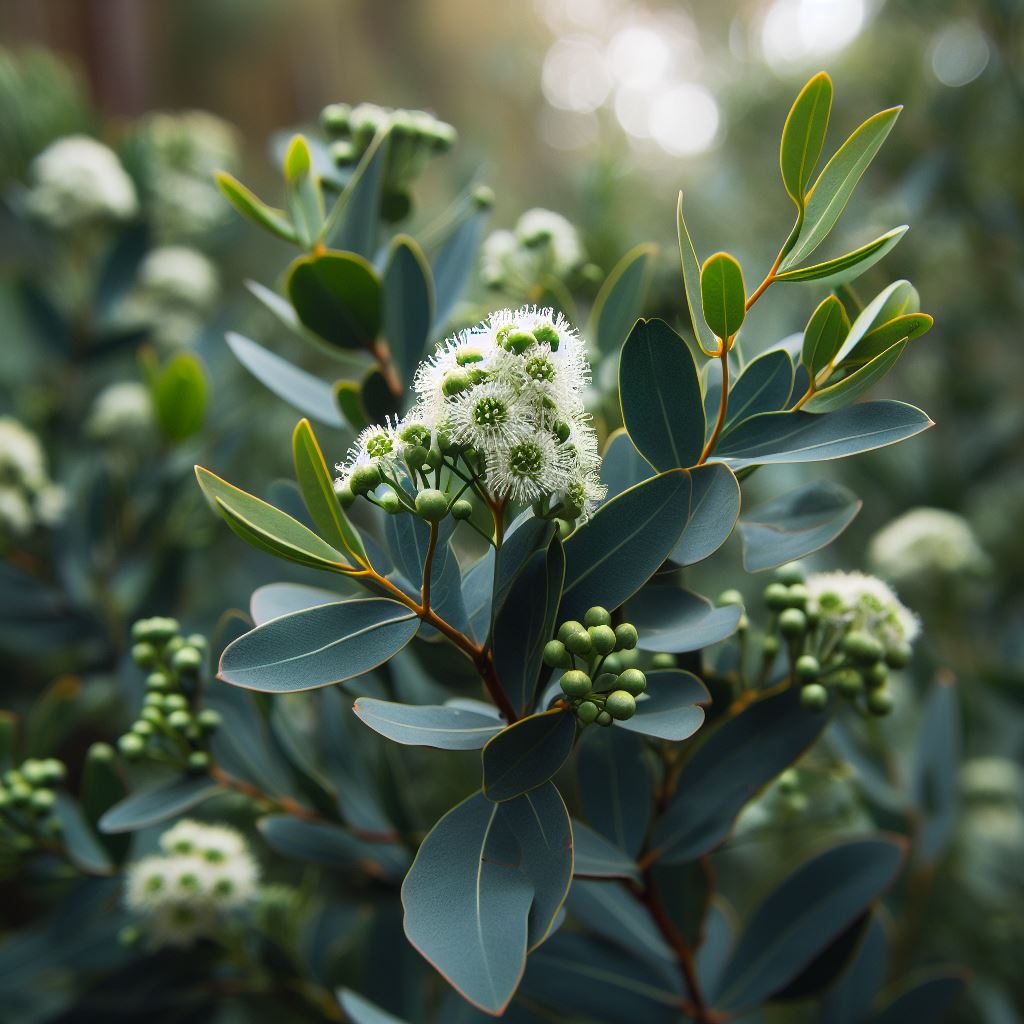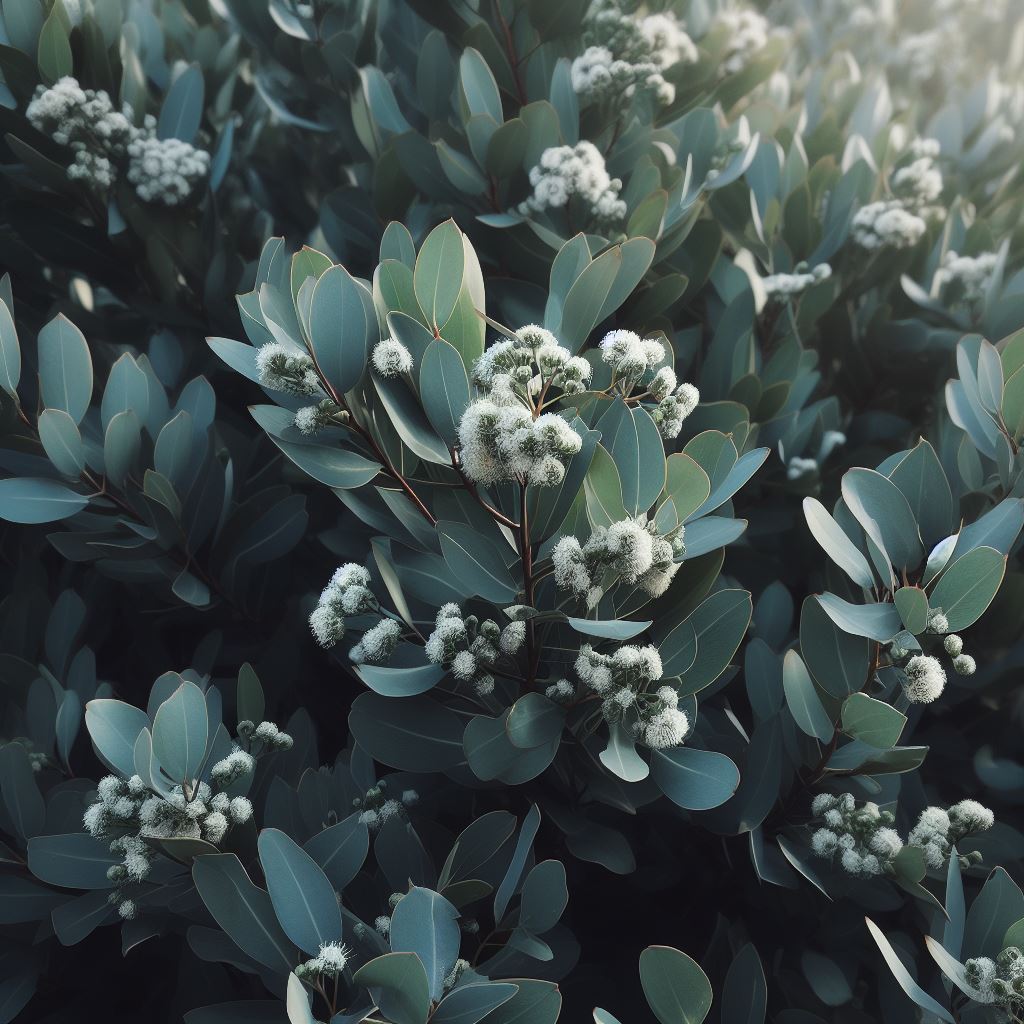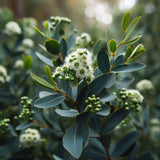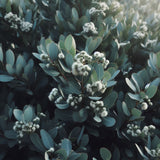Eucalyptus globulus (Blue Gum, Tasmanian Bluegum)
In stock
$10.00
Eucalyptus globulus (Blue Gum, Tasmanian Bluegum) is a tall and iconic eucalyptus tree native to southeastern Australia, including Tasmania. It is one of the most widely recognized and economically important eucalyptus species. Here are some key characteristics and information about Eucalyptus globulus:Appearance: Blue Gum is a large and fast-growing evergreen...
Eucalyptus globulus (Blue Gum, Tasmanian Bluegum) is a tall and iconic eucalyptus tree native to southeastern Australia, including Tasmania. It is one of the most widely recognized and economically important eucalyptus species. Here are some key characteristics and information about Eucalyptus globulus:
Appearance: Blue Gum is a large and fast-growing evergreen tree that can reach towering heights of up to 330 feet (100 meters) under ideal conditions. It has a straight, tall trunk with smooth, mottled bark that sheds in long strips, revealing patches of white, blue-gray, and brownish bark underneath.
Leaves: The leaves of Eucalyptus globulus are typically lance-shaped, glossy, and dark green. They are arranged alternately along the branches and have a strong eucalyptus scent when crushed.
Flowers: The tree produces small, white, or cream-colored flowers with numerous stamens, which are arranged in clusters or inflorescences. The flowers are attractive to pollinators like bees and birds.
Fruit: The fruit of Blue Gum is a woody capsule that contains numerous small seeds. These capsules split open to release the seeds when mature.
Habitat: Eucalyptus globulus is native to southeastern Australia, where it can be found in a variety of habitats, including open forests, woodlands, and wetter regions near watercourses. It is known for its ability to adapt to different soil types and environmental conditions.
Cultivation: Blue Gum is one of the most widely planted eucalyptus species globally, and it is cultivated in many countries with suitable climates. It is grown for various purposes, including timber production, pulpwood, and ornamental landscaping.
Timber: The timber of Eucalyptus globulus is highly valued for its strength, durability, and versatility. It is commonly used in construction, flooring, furniture making, and paper production. The wood has a pale color and is often referred to as "tasmanian oak" in the timber industry.
Essential Oils: Blue Gum leaves are a source of essential oils, including eucalyptus oil, which is used for its medicinal properties, aromatic qualities, and in various pharmaceutical and cosmetic products.
Fire Adaptation: Like many eucalyptus species, Eucalyptus globulus is adapted to fire-prone environments. It can resprout from the base and recover after fire.
Conservation: In its native range, Blue Gum may face threats from habitat loss, land development, and climate change. Conservation efforts may be needed to protect and preserve this species.
Eucalyptus globulus, known as Blue Gum or Tasmanian Blue Gum, is a significant and versatile tree species known for its towering height, valuable timber, and essential oils. Its adaptability to various growing conditions has made it a prominent tree in forestry and landscaping practices worldwide.
Appearance: Blue Gum is a large and fast-growing evergreen tree that can reach towering heights of up to 330 feet (100 meters) under ideal conditions. It has a straight, tall trunk with smooth, mottled bark that sheds in long strips, revealing patches of white, blue-gray, and brownish bark underneath.
Leaves: The leaves of Eucalyptus globulus are typically lance-shaped, glossy, and dark green. They are arranged alternately along the branches and have a strong eucalyptus scent when crushed.
Flowers: The tree produces small, white, or cream-colored flowers with numerous stamens, which are arranged in clusters or inflorescences. The flowers are attractive to pollinators like bees and birds.
Fruit: The fruit of Blue Gum is a woody capsule that contains numerous small seeds. These capsules split open to release the seeds when mature.
Habitat: Eucalyptus globulus is native to southeastern Australia, where it can be found in a variety of habitats, including open forests, woodlands, and wetter regions near watercourses. It is known for its ability to adapt to different soil types and environmental conditions.
Cultivation: Blue Gum is one of the most widely planted eucalyptus species globally, and it is cultivated in many countries with suitable climates. It is grown for various purposes, including timber production, pulpwood, and ornamental landscaping.
Timber: The timber of Eucalyptus globulus is highly valued for its strength, durability, and versatility. It is commonly used in construction, flooring, furniture making, and paper production. The wood has a pale color and is often referred to as "tasmanian oak" in the timber industry.
Essential Oils: Blue Gum leaves are a source of essential oils, including eucalyptus oil, which is used for its medicinal properties, aromatic qualities, and in various pharmaceutical and cosmetic products.
Fire Adaptation: Like many eucalyptus species, Eucalyptus globulus is adapted to fire-prone environments. It can resprout from the base and recover after fire.
Conservation: In its native range, Blue Gum may face threats from habitat loss, land development, and climate change. Conservation efforts may be needed to protect and preserve this species.
Eucalyptus globulus, known as Blue Gum or Tasmanian Blue Gum, is a significant and versatile tree species known for its towering height, valuable timber, and essential oils. Its adaptability to various growing conditions has made it a prominent tree in forestry and landscaping practices worldwide.
Botanical Name : Eucalyptus globulus
Common Name : Blue Gum, Tasmanian Bluegum
Height : 150-230 ft
Spread : 20- 40 ft
Germination Info : Seed requires 30 days cold stratification
Hardiness zone : 9+
Average seed per ounce : Approx. 10,000








